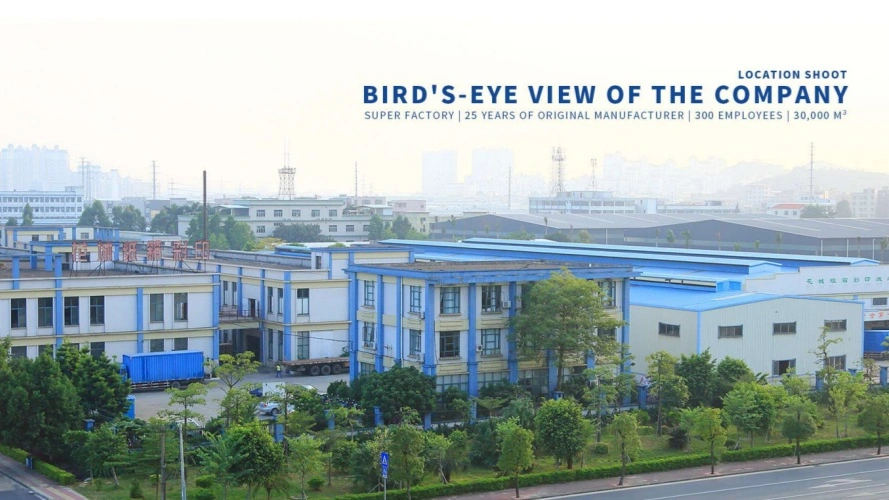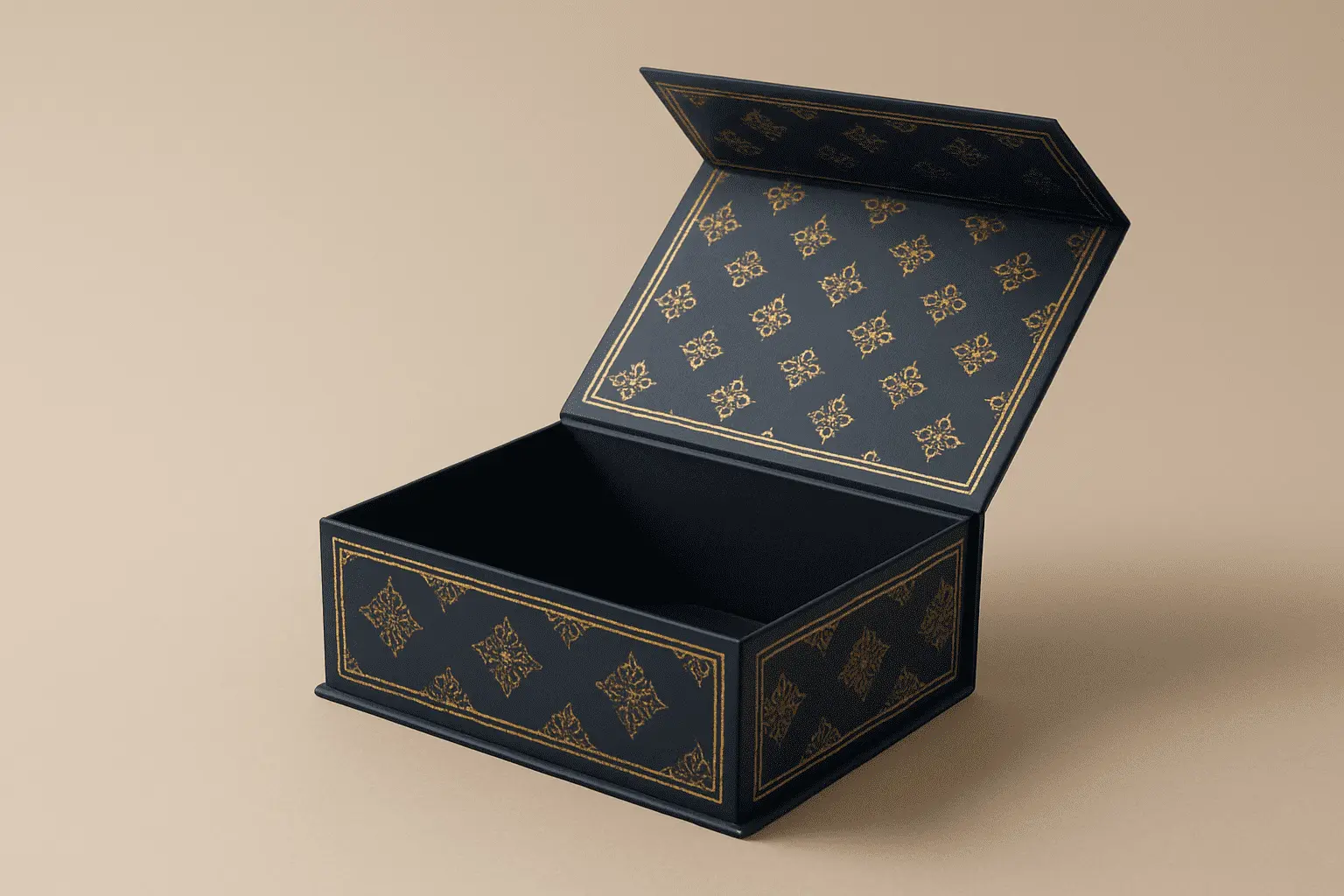Common Mistakes Buyers Make When Ordering Rigid Boxes
Ordering rigid boxes for your business can be a complex process that requires careful consideration of multiple factors. Many buyers, especially those new to packaging procurement, often make critical mistakes that can lead to increased costs, delayed production, poor quality outcomes, and ultimately unsatisfied customers. Understanding these common pitfalls is essential for making informed decisions when selecting a rigid box supplier. From material selection and structural design to production specifications and quality control, the rigid box ordering process involves numerous technical aspects that demand expertise and attention to detail. By identifying and avoiding these frequent mistakes, businesses can ensure they receive high-quality packaging solutions that meet their specific requirements while maintaining cost-effectiveness and production efficiency.

Inadequate Material Selection and Specification Errors
Choosing Wrong Substrate Materials Without Understanding Applications
One of the most fundamental mistakes buyers make is selecting inappropriate substrate materials for their rigid box applications without fully understanding the performance characteristics and limitations of different options. Many purchasers automatically opt for the most expensive materials thinking they guarantee superior quality, or conversely, choose the cheapest options to minimize costs without considering the long-term implications. When ordering rigid boxes, it's crucial to understand that different substrates serve different purposes and applications. For instance, SBS C1S (Solid Bleached Sulfate – Coated One Side) offers exceptional print quality with its bright white appearance and smooth coated surface, making it ideal for premium packaging applications in cosmetics and personal care industries. However, using this premium material for basic shipping applications would be unnecessarily costly. Similarly, CCNB (Clay Coated News Back) provides cost-effective solutions with good print performance for budget-conscious applications, but wouldn't be suitable for luxury brand packaging where premium appearance is paramount. Understanding the specific characteristics of materials like grey chipboard for structural integrity, duplex chipboard for balanced performance, or metallic substrates for luxury appeal ensures that your rigid box selection aligns perfectly with your brand positioning and functional requirements.
Overlooking Environmental and Sustainability Requirements
Another critical mistake involves neglecting environmental considerations and sustainability requirements when specifying materials for rigid box production. Modern consumers and regulatory bodies increasingly demand eco-friendly packaging solutions, yet many buyers fail to prioritize sustainable material options during the procurement process. This oversight can result in packaging that doesn't align with corporate sustainability goals or consumer expectations, potentially damaging brand reputation and limiting market acceptance. FSC certified materials, recyclable substrates, and environmentally friendly production processes have become essential considerations in rigid box manufacturing. Companies like Guangzhou Fetching Color Printing & Packaging Ltd. recognize this trend by offering FSC certified materials that are environmentally friendly and recyclable, ensuring compliance with modern environmental standards. Buyers should specifically request information about material certifications, recycling capabilities, and environmental impact assessments when evaluating rigid box options. Brown Kraft paper, for example, offers excellent environmental credentials being recyclable, biodegradable, and aligned with sustainable packaging goals while providing a natural, authentic appearance ideal for organic or handcrafted brands. Failing to consider these factors early in the specification process can lead to costly redesigns or missed market opportunities.
Insufficient Consideration of Printing and Finishing Compatibility
A frequently overlooked aspect of material selection involves understanding how chosen substrates will interact with intended printing technologies and finishing processes. Many buyers focus solely on basic material properties without considering how their choices will affect the final visual appearance and tactile experience of their rigid box packaging. Different materials respond differently to various printing methods, surface treatments, and finishing techniques. For instance, SBS C2S (Solid Bleached Sulfate, Coated Two Sides) features coating on both sides, ensuring excellent double-sided print quality with vibrant color reproduction, making it perfect for applications requiring professional print output on both interior and exterior surfaces. However, this material may not be necessary for single-sided printing applications where SBS C1S would be more cost-effective. Understanding compatibility between materials and finishing processes like UV coating, hot foil stamping, embossing, or die-cutting is crucial for achieving desired aesthetic outcomes. Metallic substrates offer exceptional visual impact with their high-gloss, mirror-like finish but require specific handling and printing considerations that differ from standard paper substrates. Buyers who fail to discuss material-finishing compatibility with their rigid box supplier often encounter production delays, quality issues, or unexpected cost increases when their chosen materials prove incompatible with desired finishing processes.
Poor Communication and Specification Documentation
Inadequate Technical Drawing and Dimensional Specifications
One of the most common sources of problems in rigid box orders stems from insufficient or unclear technical specifications and dimensional drawings. Many buyers provide vague descriptions or incomplete measurements, assuming that manufacturers can interpret their requirements accurately without detailed documentation. This approach frequently leads to misunderstandings, production delays, and final products that don't meet expectations. Professional rigid box manufacturing requires precise specifications including exact dimensions, tolerances, structural requirements, and assembly instructions. Buyers often fail to provide comprehensive technical drawings that clearly indicate fold lines, glue areas, die-cut specifications, and assembly sequences. This lack of detail forces manufacturers to make assumptions that may not align with the buyer's intentions. Companies with extensive experience like Guangzhou Fetching Color Printing & Packaging Ltd., with their team of over ten packaging engineers, can provide valuable guidance in developing proper specifications and technical documentation. However, buyers must still provide clear initial requirements and be prepared to engage in detailed technical discussions. Proper specification documentation should include not only dimensional information but also material requirements, printing specifications, finishing details, quality standards, and packaging requirements. The ordering process should involve demand consultation where customers send detailed requirements, followed by solution design where business managers conduct thorough content discussions with customers to ensure all specifications are clearly understood and documented.
Insufficient Sample Review and Approval Processes
Another critical communication mistake involves inadequate sample review and approval processes that fail to validate all aspects of the proposed rigid box design before full production begins. Many buyers rush through the sampling phase or approve samples based on limited criteria, only to discover problems during mass production that could have been identified and resolved earlier. Effective sample evaluation requires systematic review of all product attributes including dimensional accuracy, material quality, printing reproduction, finishing execution, structural integrity, and functional performance. Buyers should request samples that represent actual production conditions rather than hand-made prototypes that may not accurately reflect mass production capabilities. The sample approval process should involve multiple stakeholders including packaging engineers, quality control personnel, marketing teams, and end-users to ensure comprehensive evaluation. Professional manufacturers like Guangzhou Fetching Color Printing & Packaging Ltd. follow structured processes where they make samples according to customer requirements and confirm all details before proceeding to production. This includes validation of printing quality using their German Heidelberg printing machines capable of handling large format requirements up to 1.62m width, ensuring that final production will meet all visual and structural specifications. Buyers should also request samples that demonstrate various finishing techniques and surface treatments to verify compatibility and appearance before committing to large production runs.
Failure to Establish Clear Quality Standards and Acceptance Criteria
A significant communication gap often exists regarding quality standards and acceptance criteria for rigid box orders. Many buyers assume that manufacturers understand their quality expectations without explicitly defining measurable standards and acceptance criteria. This assumption frequently leads to disputes during delivery when products meet technical specifications but fail to satisfy unstated quality expectations. Professional rigid box procurement requires clearly defined quality standards covering all aspects of the final product including dimensional tolerances, printing quality standards, color matching requirements, finishing specifications, and functional performance criteria. These standards should be documented in purchase orders and referenced throughout the production process. Quality management systems like ISO9001-2015, which Guangzhou Fetching Color Printing & Packaging Ltd. maintains, provide frameworks for consistent quality delivery, but buyers must still communicate their specific requirements clearly. Acceptance criteria should address visual appearance standards, functional performance requirements, packaging and delivery conditions, and inspection procedures. G7 Color Management certification ensures consistent color reproduction, but buyers must specify their color matching requirements and provide appropriate color standards for reference. Establishing clear quality documentation prevents misunderstandings and provides objective criteria for evaluating delivered products.
Inadequate Production Planning and Timeline Management
Unrealistic Timeline Expectations and Rush Order Penalties
One of the most costly mistakes buyers make involves setting unrealistic production timelines without understanding the complexity and time requirements of professional rigid box manufacturing. Many purchasers underestimate the time needed for design development, material procurement, tooling preparation, production setup, quality control, and logistics coordination. This misunderstanding often leads to rush orders that incur significant premium charges or compromise quality standards to meet impossible deadlines. Professional rigid box production involves multiple sequential processes including printing, surface finishing, lamination mounting, die-cutting, gluing and assembly, followed by packing and shipping. Each stage requires specific setup time, production time, and quality control verification before proceeding to the next step. Companies with advanced automation like Guangzhou Fetching Color Printing & Packaging Ltd., equipped with 15 fully automatic die-cut machines of different sizes and AI gift box production lines, can optimize production efficiency, but even automated processes require proper planning and setup time. Buyers should engage with manufacturers early in their project planning to establish realistic timelines that account for all production phases. Independent R&D and patented manufacturing processes can reduce production time through automated visual positioning systems, but buyers must still allow adequate time for proper quality control and logistics coordination. Understanding that short production times and stable quality are achieved through proper planning rather than rushed execution helps buyers set appropriate expectations and avoid unnecessary premium costs.
Insufficient Inventory Planning and Order Quantity Optimization
Poor inventory planning and order quantity decisions represent another common mistake that significantly impacts both cost efficiency and supply chain reliability. Many buyers either over-order to secure lower unit prices without considering storage costs and inventory risks, or under-order to minimize immediate investment while ignoring the cost penalties of frequent small orders. Professional rigid box procurement requires careful analysis of demand patterns, storage capabilities, cash flow considerations, and total cost of ownership including unit prices, setup charges, storage costs, and logistics expenses. Manufacturers often offer quantity discounts and setup cost amortization benefits for larger orders, but buyers must balance these advantages against inventory carrying costs and obsolescence risks. Companies offering cost-effective solutions like Guangzhou Fetching Color Printing & Packaging Ltd.'s collapsible rigid boxes can save 20%-30% compared to standard designs, making larger quantity orders more attractive while reducing storage space requirements. Buyers should work with manufacturers to understand minimum order quantities, setup costs, price breaks, and lead time requirements to optimize their ordering strategy. Consideration should also be given to seasonal demand variations, product lifecycle stages, and market growth projections when determining optimal order quantities. Effective inventory planning involves coordination between procurement, sales forecasting, and logistics teams to ensure that rigid box orders align with actual business requirements while maximizing cost efficiency.
Inadequate Backup Planning and Risk Management
The failure to develop adequate backup plans and risk management strategies represents a critical oversight that can severely impact business operations when primary suppliers encounter problems or market conditions change unexpectedly. Many buyers rely on single suppliers without developing alternative sources or contingency plans, leaving their operations vulnerable to supply disruptions, quality issues, or capacity limitations. Professional procurement requires diversified supplier bases, qualified backup sources, and documented contingency procedures for managing supply chain disruptions. This includes maintaining relationships with multiple qualified suppliers, understanding their production capabilities and capacity limitations, and establishing emergency procurement procedures for critical situations. Suppliers with comprehensive capabilities like Guangzhou Fetching Color Printing & Packaging Ltd., with their 35,000 m² factory area, 300+ employees, and advanced machinery including KBA106-(9+1) UV printing machines and multiple production lines, offer greater reliability and capacity flexibility, but buyers should still maintain backup relationships for risk management. Emergency procurement planning should address quality control procedures for new suppliers, expedited qualification processes, and alternative specification options that can be implemented quickly when needed. Understanding supplier certifications like ISO14001-2015 Environmental Management System, Smeta, and Disney certification helps buyers evaluate supplier reliability and compliance capabilities when developing backup plans.
Conclusion
Avoiding these common mistakes when ordering rigid boxes requires careful planning, clear communication, and professional expertise throughout the procurement process. Successful rigid box purchasing involves understanding material properties, establishing clear specifications, managing production timelines effectively, and maintaining strong supplier relationships. By recognizing these potential pitfalls and implementing systematic approaches to address them, buyers can achieve better outcomes in terms of quality, cost efficiency, and delivery reliability. Working with experienced manufacturers who understand these challenges and can provide comprehensive support throughout the ordering process significantly improves the likelihood of successful outcomes.
Ready to avoid these costly mistakes and work with a trusted China rigid box factory? Guangzhou Fetching Color Printing & Packaging Ltd. brings over 20 years of experience as a leading China rigid box supplier and China rigid box manufacturer. With our 35,000 m² facility, 300+ skilled employees, and partnerships with over 1,000 loyal customers worldwide, we understand exactly how to help you navigate the complex world of rigid box procurement. Our expertise as a China rigid box wholesale provider ensures you get the best rigid box price while maintaining exceptional quality standards. Whether you're looking for rigid box for sale options or need comprehensive packaging solutions, our team of senior engineers and advanced manufacturing capabilities including German Heidelberg printing machines and automated production lines are ready to deliver results that exceed your expectations. Don't let common ordering mistakes impact your business success – contact our experts today at public@fetchingprinting.com to discuss your rigid box requirements and discover how our proven processes can deliver the perfect packaging solution for your brand.
References
1. Johnson, M.R., & Patterson, L.K. (2023). "Packaging Procurement Best Practices: Avoiding Common Pitfalls in Industrial Purchasing." Journal of Supply Chain Management, 41(3), 127-145.
2. Chen, H., Williams, D.A., & Thompson, S.J. (2022). "Material Selection Strategies for Rigid Box Manufacturing: A Comprehensive Analysis of Substrate Performance and Cost Optimization." International Packaging Technology Review, 38(7), 203-221.
3. Rodriguez, C.M., & Lee, J.H. (2023). "Quality Control and Communication Frameworks in Custom Packaging Manufacturing: Lessons from Industry Analysis." Manufacturing Excellence Quarterly, 15(2), 78-96.
4. Anderson, P.T., Kumar, R., & Foster, E.L. (2022). "Production Planning and Timeline Management in Specialized Packaging Industries: Risk Assessment and Mitigation Strategies." Operations Management Today, 29(4), 156-174.

Based on your location and order quantity, you will have the opportunity to receive a limited time free shipping promotion!

Corporate Purpose
